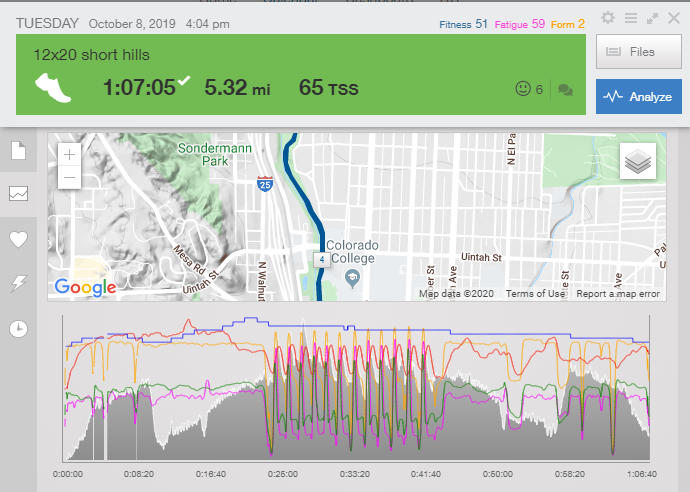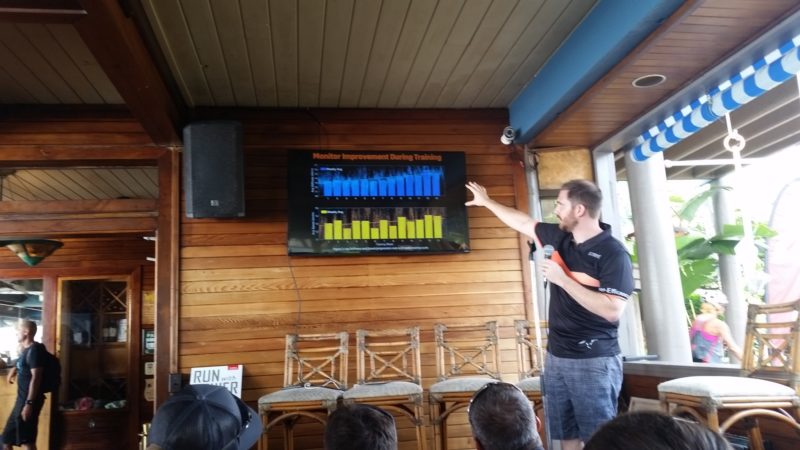At the beginning of each high school cross country season, I share some basic nutrition tips to the students and the parents at the parents meeting on good eating for the school day and afternoon practices. It is also a nice general refresher to share with all of you reading my blog.
For optimal performance, regardless of “speed,” athletes need to provide their bodies with quality fuel sources. The guidelines presented here will allow you to make smart choices to fuel your active lifestyle so that you can stay healthy and perform well.
The basics.
Food is made up of macronutrients and micronutrients.
Macronutrients are
- Carbohydrates
- Protein
- Fat
Micronutrients are what we typically call vitamins and minerals. The best ways to get these are to eat real or whole foods. Typically the closer a food is to it’s natural state, the better.
Carbohydrates are your primary fuel source. The carbs you want to eat should be high quality. Avoid refined or processed carbohydrates, especially sugars, in your daily diet. The exception is when we might need quick energy during a longer or more intense workout. Vegetables, fruit, and whole grains are your best carbohydrate sources.
Protein is necessary to rebuild the muscle damage that is done when we run and strength train. Adequate protein is needed for proper repair and should be primarily from lean sources. There are ways to get adequate protein on a plant-based diet, you just need to be a bit more conscious of food choices.
Fats. Fats are an important part of our diet, as they help us absorb certain vitamins, and help with nerve, brain, and heart function, and provide cell structure in addition to being a fuel source. While trans fats and large amounts of saturated fat should be avoided, healthy fats should be consumed and are a vital part of a healthy eating plan.
How much of each should I eat?
The following is from http://choosemyplate.gov, and that is a good starting point for nutrition resources. For an active person setting up a healthy plate, fill half of it with vegetables and fruits (prioritize vegetables), about a quarter with whole grains (if needed,) and the remaining part with lean protein and healthy fats. The more sedentary you are, the smaller your grain portion can be, if at all.
Notice how the vegetables are slightly bigger than the fruits. Grains can also include starchy vegetables (such as sweet potato or corn) and should be higher on hard training days, lower on easy days. Fat is missing from this plate so think of replacing the “dairy” side with healthy fats, and including dairy as a part of the protein section if you choose to eat dairy.
When to eat.
You should be eating throughout the day to support your activities. Breakfast is critical, so if you tend to skip it, try consuming liquid calories such a smoothie.
Eat when you are hungry. A school/work day can make it hard to eat when you need to, so use some trial and error in portion sizes to get you through. Ideally you are eating about every three hours, even if it’s just a small snack to get you to your next meal. Bring snacks with you, so that you never let yourself get too hungry.
Eat before training. Eat a decent meal 2-3 hours before training, so that means on practice/training days, a good lunch with quality carbohydrates is very important. If you feel you are a little hungry right before practice, a small snack of something easily digestible (banana and some peanut butter) can help, or even a bottle of sports drink for some calories and electrolytes.
Eat after training. After practice/training a recovery snack is very important, especially on hard days. The key is to get in carbohydrates quickly to replenish glycogen stores and also a decent amount of protein to help your body start repairing muscle tissue. Then as soon as possible when you get home, have a normal and healthy meal.
During training it’s important to stay fueled as well. If you find that you are losing too much energy at the end of practice/your training session, especially during hard or long run days, you might consider a sports drink for some supplemental calories.
Hydration tips.
It’s very important to stay hydrated. To help prepare you for practice, drink ~16oz the hour before practice/training. Drink to your thirst during practice and then drink another 16oz after practice. Since you are training 6 days a week, if you get in a deficit it can be hard to recover.
To know if you are hydrated your urine should be pale yellow. If it’s more like the color of apple juice, you need to drink a bit more.
On hot days, adding electrolytes to your drink or using a sports drink can be helpful to stay hydrated. You can also add a little salt to your food.
Things to watch out for.
Sugar. There are lots of added sugars in processed foods and these typically don’t add nutritional value to anything. Even foods that appear to be healthy (dried fruit) can have extra sugar added. Read labels to find out the sugar content.
“Energy drinks.” Stay away from these. Get your energy from real food! The more fruits and veggies that you eat, the more energy you will find that you have.
Processed foods. The more processed a food is, the fewer nutrients it will contain. Some foods are enriched, but we are often better eating the whole food counterpart. If it comes in a box, it’s most likely processed.
The key to eating well for performance is keeping your blood sugar stable. This means combining good carbohydrate sources (which often contain fiber) with protein and fat. Keeping your blood sugar stable throughout the day will make you feel better, have more energy, and run better.
General resources for healthy eating and recipes:
https://feedzonecookbook.com/
https://www.velopress.com/books/racing-weight-cookbook/
http://fnic.nal.usda.gov/lifecycle-nutrition/fitness-and-sports-nutrition/nutrition-athletes
http://www.teamusa.org/about-the-usoc/athlete-development/sport-performance/nutrition/resources-and-fact-sheets
http://myfitnesspal.com
In the comments below, share your favorite healthy meal.








